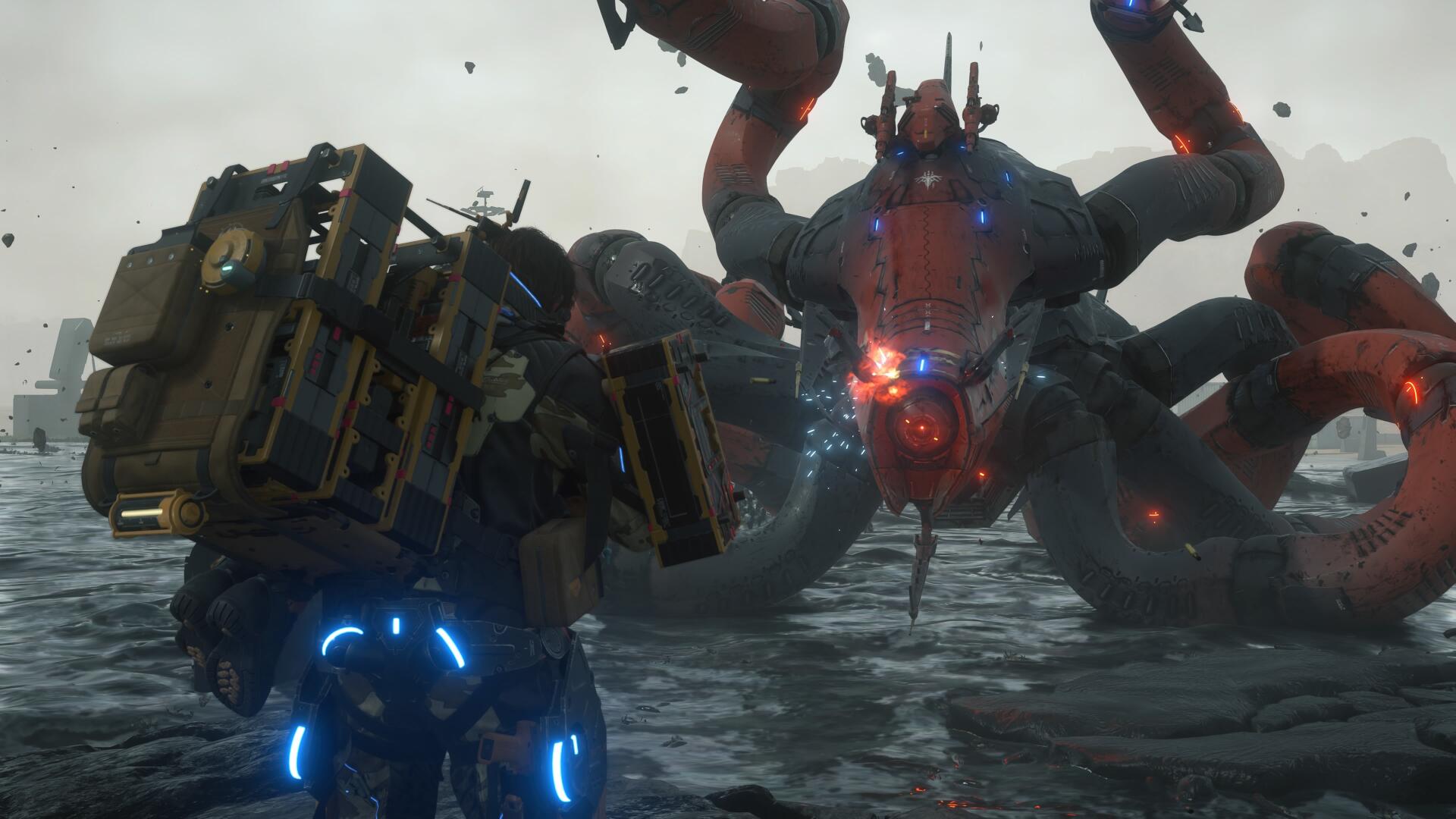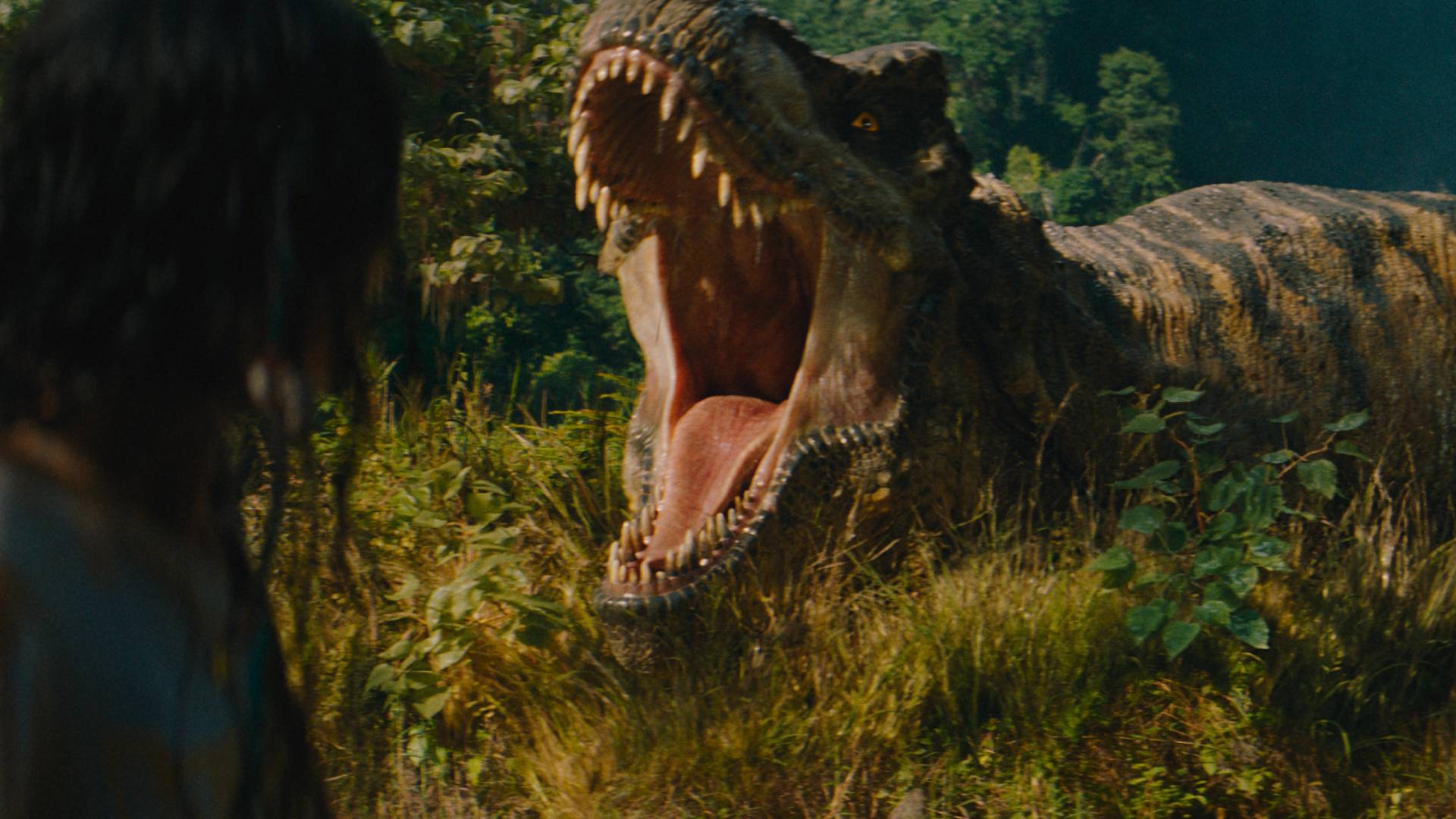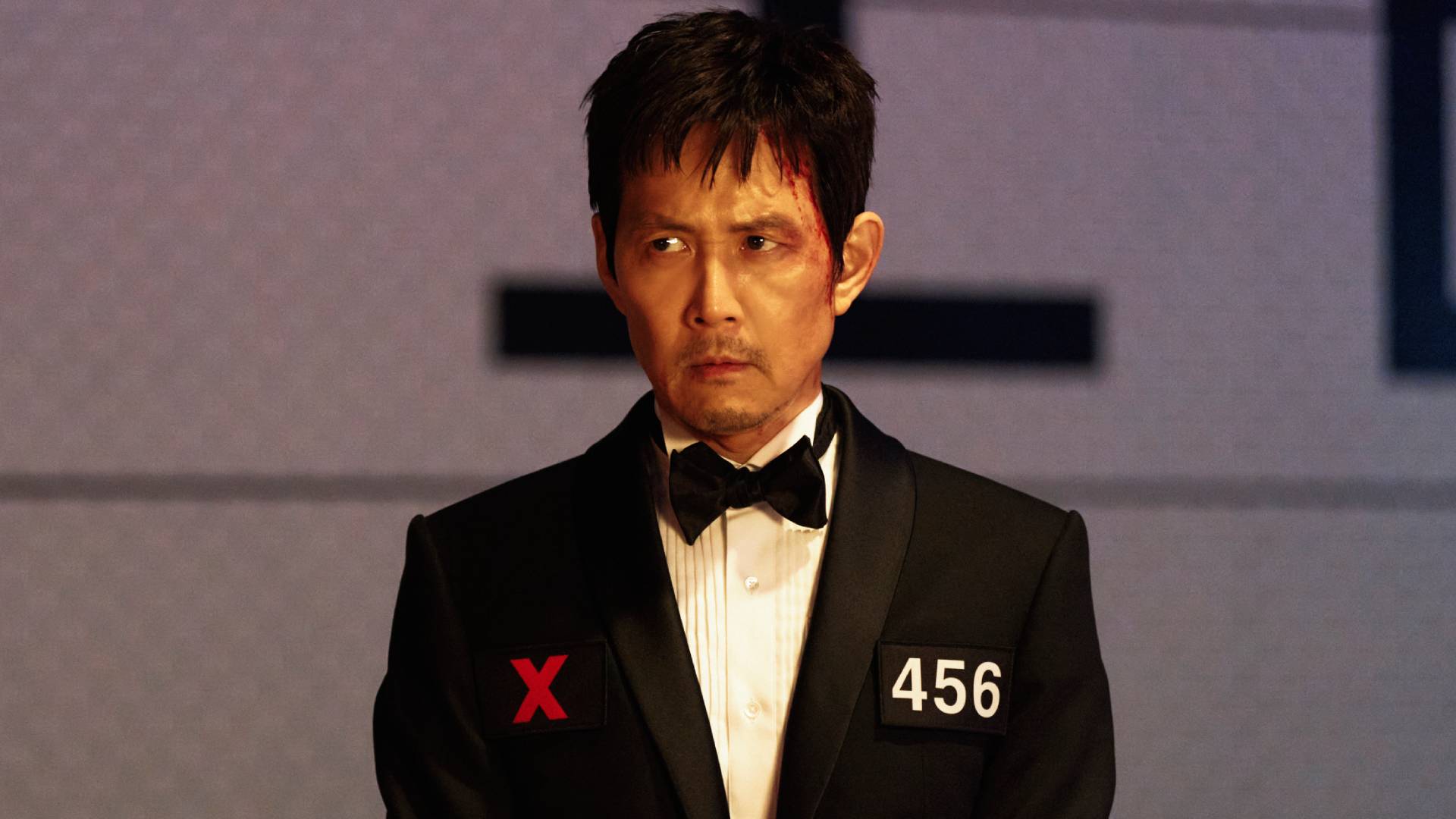How the wordless Gordon Freeman became a gaming legend in Half-Life 2
Before Dunwall, there was City 17. Before The Last Of Us’s overrun sewer colony, there were Route Kanal’s resistance outposts. Before Elizabeth DeWitt came Alyx Vance, and before Andrew Ryan there was Wallace Breen. Thousands of words have been devoted already to explaining how great Half-Life 2 is to play, but that’s only a fraction of its legacy. It might read like hyperbole, but a great deal of what we know about effective video game storytelling today was incubated in Valve’s 2004 opus.
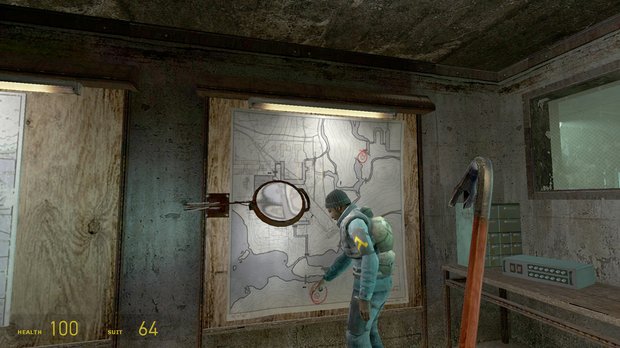
It wasn’t simply the first: System Shock’s SHODAN is the archetypal villain who harries you verbally while their minions do so physically. Thief: Deadly Shadows’ Shalebridge Cradle would pip Ravenholm to the Russian doll horror-game-within-a-game level. The reason Half-Life 2 set the bar for later games, however, was its internal consistency, an achievement even rarer than its superlative environmental fiction, which induced a state of deep immersion and emotional investment. There’s no mystery why the Internet still cries out for Half-Life 3, even after a glut of post-apocalypses and rich videogame fictions: Half-Life 2’s world made us care what happens to it.
Unlike Dr Freeman, however, the game does not emerge from years of stasis untouched by the passing of time. To play it today is to observe its relative sparseness, and the evidence of how parsimonious its developers had to be to pack in all the detail work they did. Great unbroken planes of textures are dominant in its outdoor segments, low-fidelity fuzz is apparent up close, and Nova Prospekt’s towers loom out of gloomy steel-grey fogging. Even if you install a texture mod, there’s no escaping that it is also, in a great many ways, Physics Demo: The Game. Even before Valve sees fit to bestow you with the game’s signature Gravity Gun, it has asked you to pause during a high-speed airboat chase to push a washing machine into a ramp-lifting counterweight mechanism, and to free a skip’s worth of wooden junk from underwater imprisonment so you can make stepping stones. And that even Gordan Freeman’s frictionless glide while strafing and climbing ladders cannot puncture the skin of this fiction and pop the believability of this place says a hell of a lot.
Part of what makes the storytelling so potent is restraint. Administrator Breen might have repopularised the device of handing the focal bad guy the tannoy microphone, but his ‘Breencast’ monologues run for a combined total of 16 minutes and address you indirectly for the most part, background noise unless you choose to tune in. There are no cutscenes to yank you out of character, and Valve resists wresting camera control from your hands to show you what’s coming over the horizon. Similarly, while there are instances where you’re pinned in place like a butterfly on cork to observe key events in the plot – the teleportation disaster in Kleiner’s lab, your restraint by Breen in the Citadel – you absorb this game’s backstory and most of its message through simple observation. It’s ‘show, don’t tell’ taken to its interactive extreme, the game being so willing to reward you for prying that you want to hunt out its details for yourself.
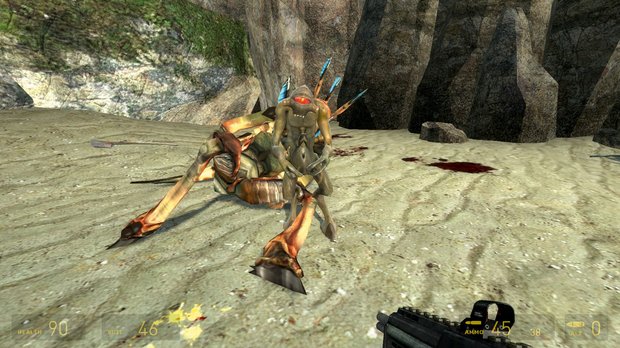
It begins the moment you step off the train into City 17. You walk from your carriage onto the central concourse as Breen’s welcome message plays out on a screen installation overhead, a symbolic elevation over his fellow man. This dispatch concludes with a half-truth: “It’s safer here.” No one need inform you that Breen’s being weaselly with his language: it’s evident in the cattle cages you pass through and the smattering of downtrodden humans filtering past the watchful lenses of Civil Protection in these echoing halls. Likewise, there’s no sense in a cutscene to display the Combine’s authoritarian grip on daily life when the designers can introduce you to this personally.
Before you’ve tasted fresh air, an officer menacingly uses his stun stuck to knock a can off a bin and onto the floor. Later, you’ll be harassed by alien zombies, antlions and shock troopers, but this is an exercise in humiliation: whether you submit to his will and place the can back in the bin or not, there’s no mistaking the disregard for your dignity in the act. Already, we have Orwellian wordplay, a toady face to blame, and our occupying force. The Breencast focused on the Combine’s reproductive suppression field merely reinforces the extent to which we’ve fallen under the thumb of ‘our benefactors’.
It would be a convenient fabrication to suggest that every texture from here on tells a story – yet clearly false, since ground and wall features are reused countless times – but what the game does retain is that eye for mise-en-scène and layering in critical detail without feeling any need to highlight it. Other games might put a glow around the picture frame of the Vance family in Black Mesa East, or give you a prompt to lock focus on the board of newspaper clippings in Kleiner’s lab that with just a few bold headlines fill in the Seven Hour War, Earth’s surrender, and Breen’s elevation to Administrator. Valve is aware that you probably came for the shooting, and is happy for you to to exercise your trigger finger as soon as possible.
Weekly digests, tales from the communities you love, and more
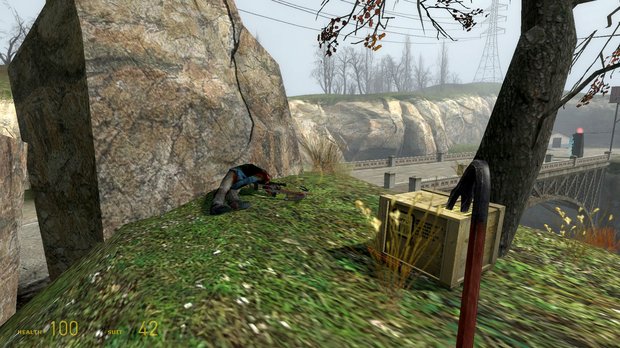
It’s not just singing Vortigaunts or G-Man sightings you’ll miss out on here if you don’t keep a weather eye on your surroundings, though – you often won’t even be able to progress, so minimal is the signposting. And yet this enforced reliance on reading your environment only increases the opportunities for Valve to weave in between the lines its tale of a world being gleaned of human life and encroached on by alien forces. City 17 famously cements this losing battle in its clashing architecture, where sinister, faintly iridescent metallic appendages impose themselves on distressed brick, but Highway 17 provides several perfect examples of the theme in its roadside structures. Observe the perfectly ordered kitchen with the kettle still on the hob, and the worn mattress upstairs.
In a nearby room is the poor soul who once owned this palace of earthly treasures, now a living nest of venomous headcrabs. The details are fuzzy, but the picture is clear: this was a man attempting to cling on to life on the frontier, who made a good go of it until the day our planet’s new ecosystem forced itself rapaciously upon him. You may see the same stoves, radios and bathtubs in a dozen different dwellings, but Half-Life 2’s level designers somehow manage to make each domicile look lived in without stacks of assets to clutter about the place, and they say as much with their arrangements of the mundane as the game does in its sequences of the fantastic.
Similarly, you’ll find your first crossbow on a grassy knoll overlooking a Combine outpost, near the mangled corpse of a resistance fighter. Again, care has been taken to tell a tale, even at the expense of the developer ensuring you will notice one of the game’s most effective guns. And much like Metro’s intertwined skeletons, these snapshots of fallen humanity subtly drive home the precarious grasp we have over our circumstances and fates.
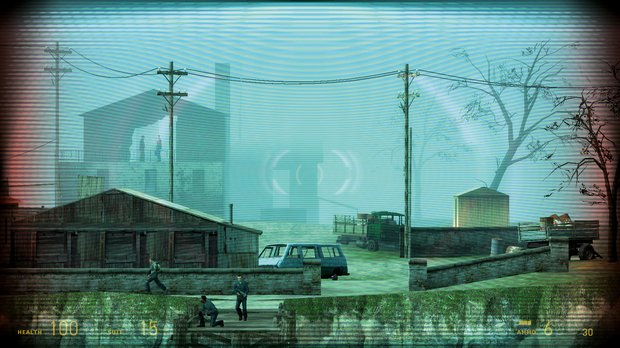
All that is accomplished without a line of dialogue too. But while Half-Life 2 is for great tracts only fractionally more talkative than its mute locus, its script is as strewn with memorable lines (“We don’t go to Ravenholm”) as incidental detail, all layering new nuances onto the fiction. With so little time to develop each character, the main reason it all holds together is their interplay, the writers happy to relegate Freeman to third or fourth wheel to sell a scene. Maybe it would be harder to buy short-range teleportation if Barney and Kleiner weren’t quibbling over the scientist’s pet headcrab; Cubbage’s rocket-launcher briefing never seems made for you, though it undoubtedly is, because you’re delivered to him mid-flow, and he asks you to wait while he addresses his troops. Many people are happened across in situ, the framing so rigorously thought out that while in one sense the world clearly revolves around you, it never feels like it would stop existing if you suddenly vanished for another 20 years.
Finally, Half-Life 2 tells its tale through the one thing games do that other mediums can’t: interaction. When you fight alongside the resistance, they’re more than mere puppets dancing to a script, cowering behind sensible cover and making dynamic sprints to you to supply you with ammo, or patch you up. Sure, they don’t get a lot of lines, or much in the way of personality, but flow between them and the illusion of being borne aloft by the common man is watertight. Again, it’s letting actions do the talking, and creates a more robust illusion of humanity’s desperate fight than any number of off-camera references ever could.
Half-Life 2 is the master mould for observational storytelling, and the games we most revere today for their narrative grace have learned its lessons well. Dishonored’s Dunwall shares its principal artists with City 17, so it’s little wonder that it too frames the transnatural with the humdrum, and imbues its skylines and tchotchkes with their own Hemmingway six-word tales. BioShock’s Rapture generally paints with a larger, more colourful brush, but knows the value of putting egos larger than the player’s in their ears, and of letting you happen upon an ecosystem in motion.
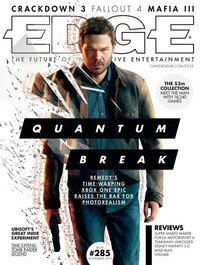
The Last Of Us, meanwhile, absorbed the notion of showing you the impact of humanity’s waning grip over nature, rather than yammering on about it, and of finding human warmth in the interstitials between popping alien growths off heads. In Half-Life 2, we find all of these and more. Now all that remains is to find out how the story ends.
Read more from Edge here. Or take advantage of our subscription offers for print and digital editions.

